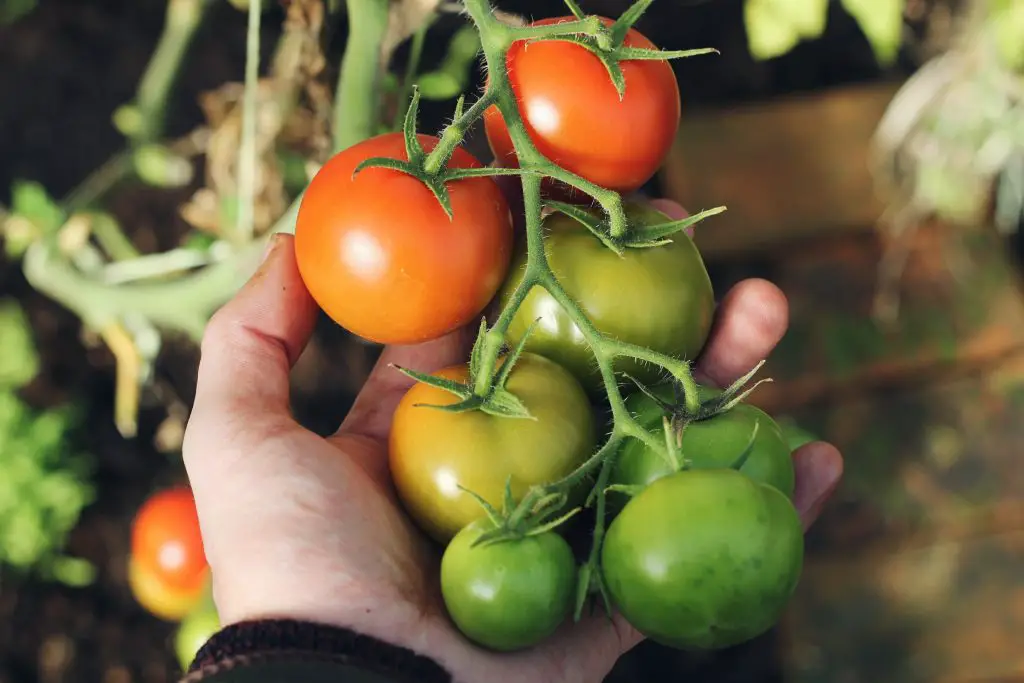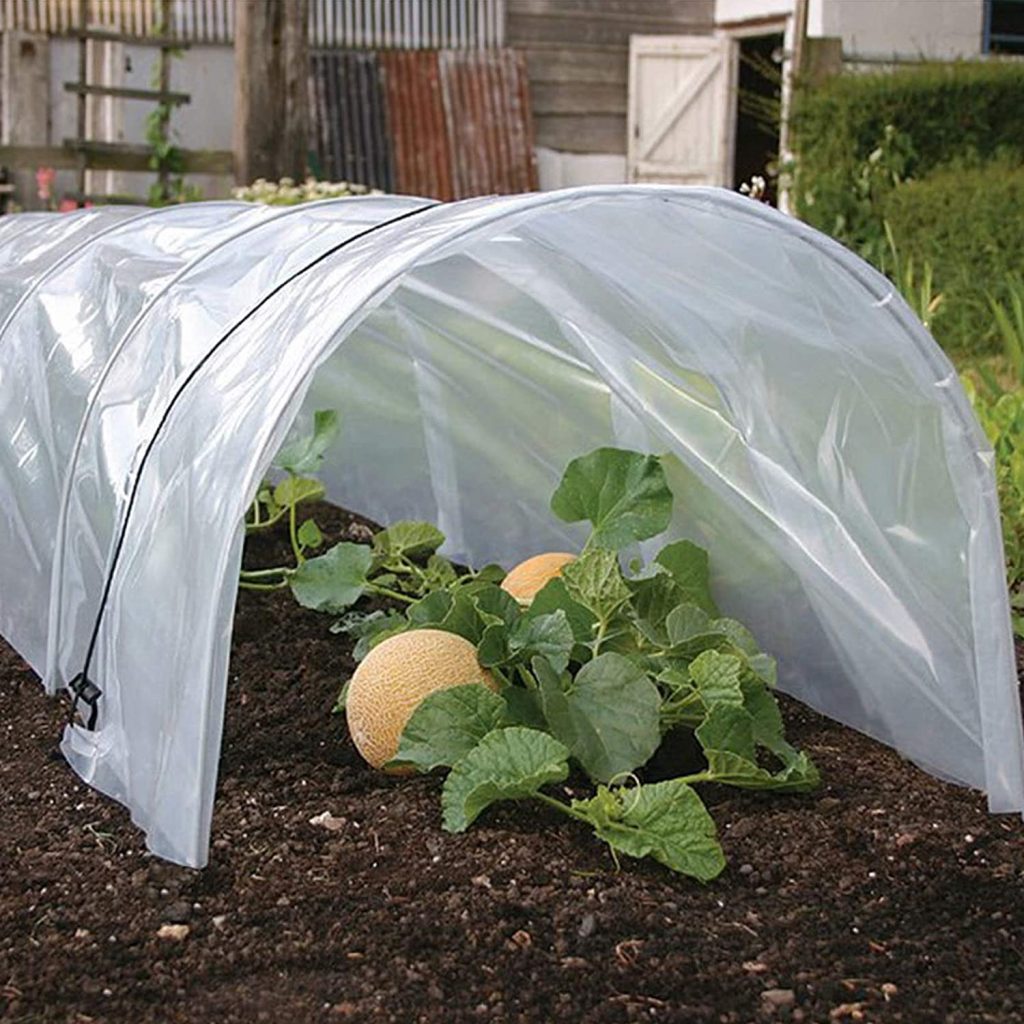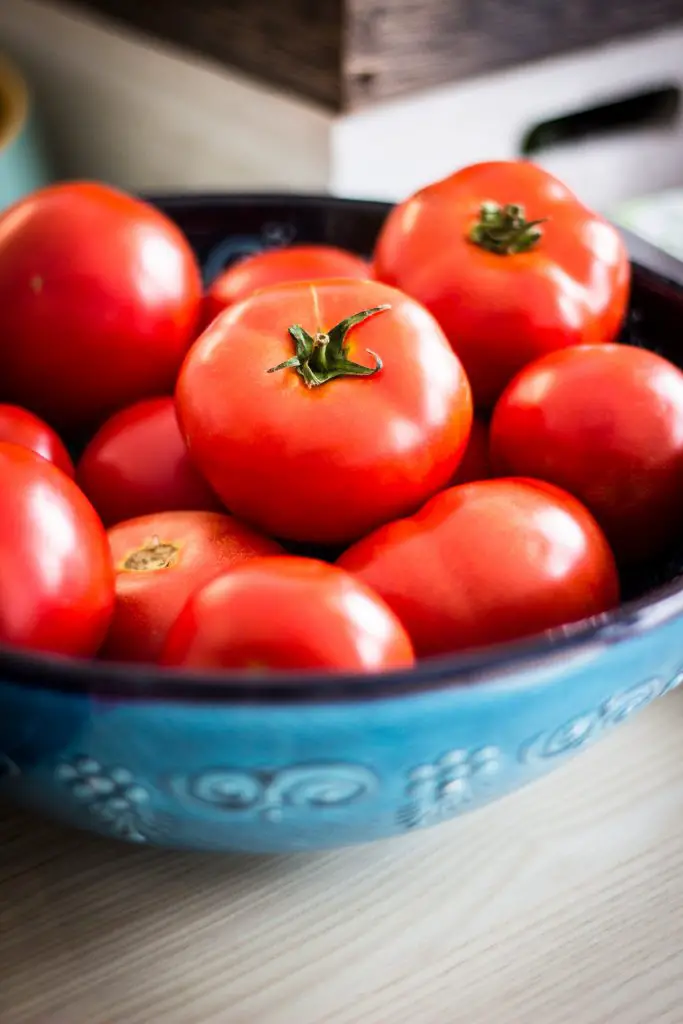How Much Sun Do Tomatoes Plants Need? Tomato plants are one of the most popular vegetables to grow at home and are usually the plant that most gardeners start off with. The easiest way to start off if you’re a beginner gardener is to head down to your local garden centre and buy yourself a punnet of seedlings and plant them into the garden. However, one of the most common questions that is asked is how much sun do tomato plants need?
Tomato plants are a fruiting plant that requires as much sun as you can provide them throughout the day as that will maximise the yield of the plant. A 1994 academic study looked at the effect of shading tomato plants and found that a 30% reduction in sunlight corresponded to a reduction of around about 25% in yield.
This suggests that in most cases is best to select a sunny location for the plant that receives full sun. The one exception to this is if you live in a region which has extreme temperatures for an extended period of time ie greater than 100F (36C) on a consistent basis.

In these cases providing shade to tomato plants is beneficial because it does allow the plants some respite from the extreme heat, also it helps to retain moisture in the soil which is generally good for the health of the plant.
How To Grow Tomatoes At Home
As mentioned at the start of the article tomatoes are one of those plants which most gardeners start off growing by purchasing seedlings, however, if you want to maximize the different varieties of tomatoes that you grow it is best to grow them from seed.
When selecting the variety that you particularly want to grow at home it is best to choose heirloom variety seeds as they will allow you to collect the seeds for the following year. If you want to see a wide range of heirloom varieties try visiting seeds now by clicking on the link below.
To start your tomato seeds off it is best to plant them in early spring in seed trays that are kept in indoors as the tomato plants do require a reason when of heat to germinate. To start this process fill a seed tray with good quality seed raising mix and ensure that the soil is firmed in to create solid plugs which will make it easier to transplant the seedlings later on.
Plant 2 to 3 seeds per cell at a depth of approximately a quarter of an inch and ensure that the soil remains moist. Seedlings will typically take approximately 7 to 10 days to appear depending upon the temperature at which you grow the plants and they will need to spend usually around 6 weeks in the seed tray before they are large enough to be planted out into the garden.
If you live in a region that has extremely cold winters it is advisable to purchase a heated propagation tray as this will ensure that you have a more consistent temperature and humidity around the seedlings which will maximise the growth rate, particularly for heat-loving plants like a tomato.
If you are considering purchasing a heated seed tray it is highly recommended that you choose one that has a removable seed tray and a humidity dome. The benefit of having a removable seed tray is that is the component that will deteriorate first in a unit, it is, therefore, advantageous to be able to replace it easily to maximize the life of the tray.
The humidity dome is also an important feature as that will ensure that any heat that is provided to the tray is trapped around the plants to ensure a more consistent temperature. To see the latest price for a heat seed tray with these features click on the link below.
Transplanting Seedlings Into The Garden
Tomato plants are frost-sensitive plants that cannot be planted out in the garden until any risk of frost has passed. However, if the temperatures remain below 59°F (15°C) then the growth rate will tend to be quite slow.
So if you live in a location where the weather remains relatively cool through the spring or even into the summer there are a couple of options that can help you to accelerate the rate of growth. The first option is to simply pot the plants on and continue to grow them indoors until the weather really improves.
The potting on process is important as it will ensure that the tomato plants do continue to develop as they will not get significantly larger in a seed tray. The second option is to provide additional protection to the plants when they go outside into the garden.
The two ways that this is typically done is either by using a cloche or a row cover. Cloches can be made easily by taking an old plastic milk carton and removing the base and lid. The disadvantage of using a cloche is that because they are relatively small in size they have a limited period in which they can protect the plants.
A longer-lasting alternative is to use a row cover that is relatively tall as this will allow you to get the plants to a much more significant size before removing the protection. If you are considering purchasing a row cover click on the link below to see the latest price on Amazon.

Extend Your Season With Growsun Row Covers
When planting the seedlings out in the garden they should be ideally be placed in a sunny location that has rich moist and free-draining soil with plenty of nutrients. If you are unsure about the quality of the soil add a bag of compost to the soil before planting.
The plants themselves will need to be spaced approximately 15 inches of apart and they also need a support structure as tomato plants can get to a height of almost 6 to 7ft depending upon the specific variety that you choose to grow. It is common most common for people to use tomato stakes which you can get from your local garden centre, however, I tend to find that these support structures are not tall enough and they also lack enough places to tie the plant into.
The support structures that we tend to recommend trellis systems which are relatively tall. Things like temporary fence is absolutely ideal because they are tall strong last 4 years, however, if you don’t have access to something like that any trellis system will do fine.

Caring For Tomato Plants
Once the tomato plants have become established in the garden there are a few things that you will need to do to ensure that you get the best possible crop, the first is to tie in the plant to the support structure to ensure that it remains upright.
The second thing that is important to do is to pinch out the side shoots which are the shoots that appear on a 45-degree angle between the main stem and the branches of the plant. If you do not do this the plant will produce large numbers of stems that will create a tangled mass and ensure that the plant focuses on the production of foliage rather than the production of fruit and flowers.
This is particularly a problem in places like the UK where it can actually affect the amount of fruit that you get off your plant. Additionally, it is important to ensure that the tomato plants are consistently watered to ensure that you maximize the fruit production.
Harvesting Tomato Plants
Tomato plants can be harvested once the fruit begins to change colour. Typically in most regions fruit will begin to appear in late summer to Autumn depending upon your specific conditions.
However, tomato plants are one of those fruits that will ripen after they have been picked so it is possible to pick fruit that is green and ripen it on your window ceil which for home gardeners typically means that at the end of the season when you have a heap of green tomatoes you can bring them indoors to ripen them.
However, ripening will only occur when the tomatoes are mature enough. At the end of the season to ensure that you get the maximum fruit production is a good idea to remove the top of the plant approximately 4 weeks prior to the last frost as this will ensure that the plant concentrates on ripening the fruit that already has rather than continuing to produce new flowers and fruit.
I hope you found this article useful and have great success growing tomatoes at home in your yard, if you have any additional comments and questions please leave them in the section below.
Relevant Articles
Do Tomato Seeds Need Light To Germinate?
How Long Does It Take Tomato Seeds To Germinate? How To Speed It Up
Do Deer Eat Tomato Plants? If So What Can I Do To Protect Them?
Can You Plant Seeds From A Store Bought Tomato? (Is It Possible?)


